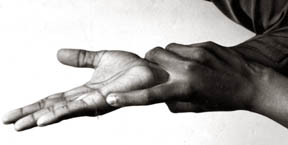|
observer |
|
|
|
|
|
OTHER LINKS |

|

|

|
Ayurveda's fight for survivalCivilizational growth though rewarding in many ways also entertained the gradual loss of all that entailed the indigenous system. However, never a period in history was there a near extinction of this native ingenious as we experience today.
Basing their theory on such i.e. Waatha, pitha and Sema, the Ayurvedic knowledge system is more into treatment of the human body from a broader perspective or a holistic approach and is always with a higher objective. It's not its nature to compartmentalize sicknesses and create specialized agents to treat respective illnesses. Though this system's documentation followed much later ancient man gifted with intuitive prowess knew with herb, root, leaf or tree bark was to be taken in times of affliction. The process of de-naturalization which invariably followed man's physical and materialistic advancement disfavoured this inborn intuitive force which soon found replacement with a kind of 'medicina alternativa' that has found global acceptance in the contemporary world. However, in animals the natural perception are still neatly intact for animals were not victims of civilizational growth. Come sickness they still get about looking for leaves and roots as curing agents as did early man for instance, sick cat go looking for kuppameniya. Dogs have their own preferences. How to keep well throughout - life is Ayurveda's message for which purpose this system insists on exercise aplenty, a diet of fruits, nuts, vegetables, timely bathing and the intake of medicinal herbs helpful in maintaining the equilibrium of basically what comprises man - the internal forces of Waatha, sema and pitha. Modernism's outcome prohibits the populace from arriving at such equilibrium and those that have been successful at it are few and far between - the reason being exposure to high tech environment, the absence of weedicide - free food and stressful living among other things. High technology knowledge always undermines the ability to be creative in treating ones self. The press button lifestyle is even ignorant of a natural system that once was. Weedicide and fertilizer application pollutes the human body yet cannot be done away with for reason of increased food production to feed the teeming millions. Stressful living has become a grave necessity to keep homefires burning - the monetary component - a nexus to all related activity. As one system based on natural goodness paves the way for social constructs, the effacement of the natural base is only too natural giving rise not only to loss of creativity as found in the indigenous system but in the rise of new and incurable sicknesses as well. Propounding the diffusion theory of nature's collective forces embedded in man, the Ayurvedic system until a half century ago made headway in disease prevention only to be taken over by a system that followed as a result of the colonial layout. Ayurveda as a curing agent refutes the idea of disease control. Accordingly, its strict adherence calls for intense self discipline and regimentation which helps one to maintain an internal calm which in turn reflects on the exterior. However, its relegation to interior status came on as its efficacy was not instant. The long drawn curing process distanced it from the people. However, its effectiveness bereft of side effects is widely known which in turn is cause for its resurgence. Its rising popularity in the west has brought in many foreigners over here which in itself is proof of its efficacy. State patronage is essential for the survival of this ancient therapeutic system. Sri Lanka relies heavily on India for her herbal requirement. Deforestation with its negative impact on the Ayurvedic system should be prime reason for policy makers to increase herbaria or herbal forest reserves an ensure a smooth supply to combat its rising cost. |
 The man of social constructs has a mindset based on his own religio-cultural
beliefs. However, to be noted in that the Homo sapien carries with him
all that which comprises the environment - of fire, water and ether. The
bile in him is the outcome of the fire component, phlegm carrie with it
water and wind entails ether.
The man of social constructs has a mindset based on his own religio-cultural
beliefs. However, to be noted in that the Homo sapien carries with him
all that which comprises the environment - of fire, water and ether. The
bile in him is the outcome of the fire component, phlegm carrie with it
water and wind entails ether. 







